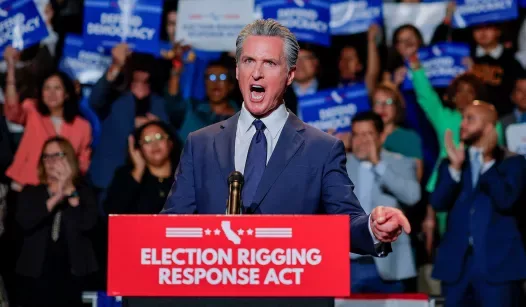California Governor Gavin Newsom is making headlines with a controversial new gerrymandering strategy that he hopes will bolster his chances in the 2028 presidential race. As political landscapes shift and the competition intensifies, the governor’s approach raises questions about the implications of redistricting and its potential impact on his political future.
Gerrymandering, the practice of manipulating electoral district boundaries to favor a particular party or candidate, has long been a contentious issue in American politics. Newsom’s recent actions suggest he is willing to embrace this tactic to secure a more advantageous position for Democrats in upcoming elections. By strategically redrawing district lines, he aims to consolidate support and maximize voter turnout in key areas, potentially paving the way for his presidential ambitions.
The stakes are high as Newsom navigates the complexities of California’s diverse electorate. With a population that includes a wide array of cultural, economic, and political perspectives, the governor’s gerrymandering strategy must carefully consider the needs and priorities of various communities. This balancing act is crucial not only for his immediate political goals but also for maintaining the integrity of the democratic process in the state.
Critics of gerrymandering argue that it undermines fair representation and distorts the electoral process. They contend that by prioritizing party interests over the voices of constituents, politicians like Newsom contribute to a growing sense of disillusionment among voters. As the governor moves forward with his plans, he will need to address these concerns and demonstrate his commitment to serving all Californians, not just those who align with his party.
In light of these challenges, Newsom’s strategy may also reflect a broader trend in American politics, where candidates increasingly rely on tactical maneuvers to gain an edge. As the political landscape becomes more polarized, the lines between ethical campaigning and opportunistic tactics can blur, leading to difficult questions about accountability and transparency.
As Newsom positions himself for the future, his gerrymandering efforts will undoubtedly face scrutiny from both supporters and detractors. The outcome of this strategy could significantly influence not only his political trajectory but also the broader dynamics of the Democratic Party as it prepares for the next presidential election.
In conclusion, Gavin Newsom’s gamble with gerrymandering is a clear indication of his ambitions for 2028. While the potential benefits are evident, the risks associated with such a strategy cannot be overlooked. As California continues to evolve politically, the implications of these decisions will resonate far beyond the state, shaping the national conversation around representation, fairness, and the future of American democracy.
